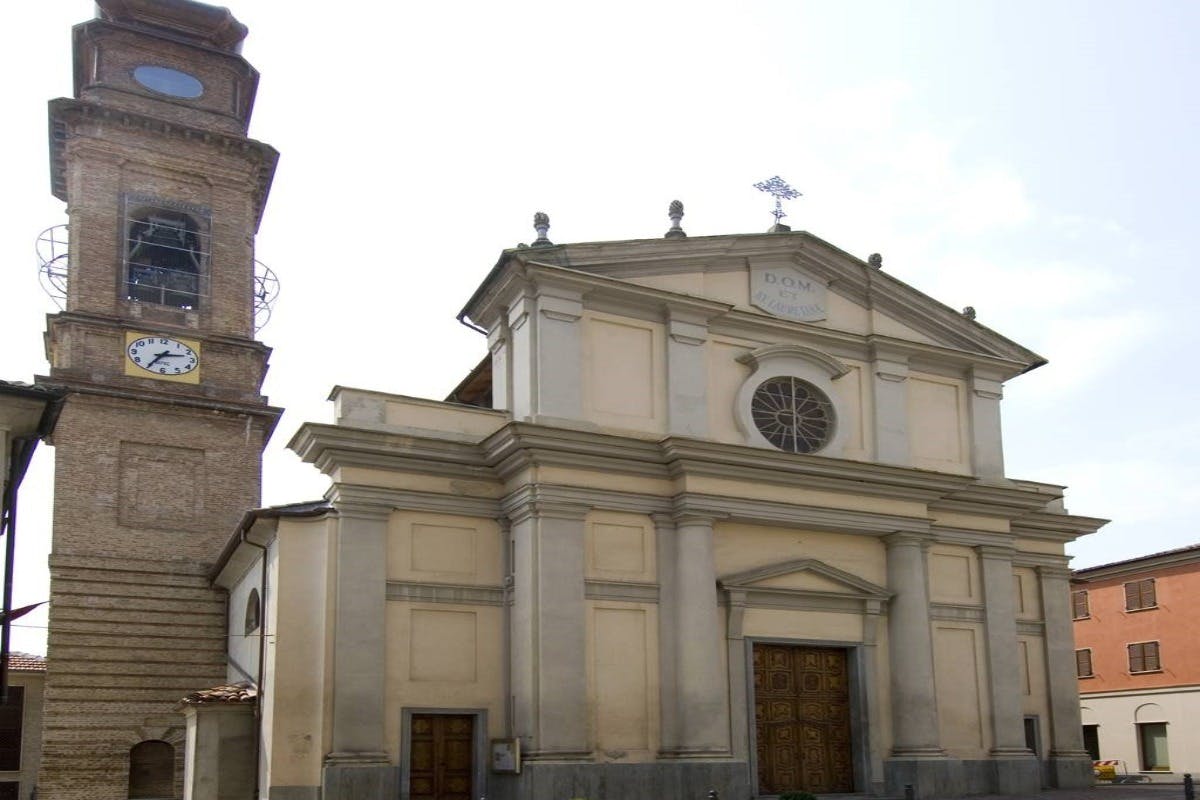Costigliole d'Asti - Parish Church of Our Lady of Loreto
The Notre Dame of Costigliole

Located in the upper part of the village, near the large castle, the actual parish church of Costigliole d'Asti is the third one built on the same site of the previous two. The first, dating back to Romanesque times, was already documented in the eleventh century while the second, made in Renaissance-Baroque style, was finished in 1594 under the regency of the parish priest Mgr. Antonio Asinari. The Asinari and the Verasis families which shared the possession of this feud, later enriched the building with works of art, with the help of the municipality, parish priests, confraternities and some notable families. Due to the collapse of grat part of this building, at beginning of 19th century the architect Carlo Ceroni was entrusted with the project of a new church, that still existing. Blessed in 1816, the Church of Our Lady of Loreto was the last important work of the famous architect of Valsolda, who died just one day before the great inauguration of the rebuilt church of Costigliole.
The parish church was the site of important restoration works during the nineteenth and twentieth centuries, thanks to which it's now possible to enjoy a great harmony of forms and wealth of ornaments in a splendid building of the mid-eighteenth century, elegant and austere at the same time. The façade of the parish church is in refined neoclassical style, with two overlapping bodies, and on the top ends in a tympanum enclosing a scroll that bears a dedicatory writing in Latin "D.O.M. ET B.V. LAURETANAE" (To God Optimum and Maximum and to the Blessed Virgin of Loreto). To the left of the church stands the high bell tower, completed in the 1930s and equipped with a grandiose concert of eight bells, among the largest ones in Asti province, which was installed in 1958.
An entirely frescoed vault, realized between 1814 and 1815 by the painter Lorenzo Peretti, dominates the central nave, marked by a giant order of columns and pilasters. The side aisles, of Tuscan order, have an elliptical dome and side chapels decorated with frescoes by Peretti and Michelangelo Pittatore. The parish of Costigliole keeps artifacts in silver, beautiful silk, damask and brocade fabrics as well as important paintings on canvas, dating from the seventeenth to the nineteenth century, including the works of Secondo and Caterina Arellano, painters from Costigliole.
The Church of Our Lady of Loreto owes its name to the italianization of the term "Notre Dame", derived from the French dominion over Piedmont, at the beginning of the nineteenth century.